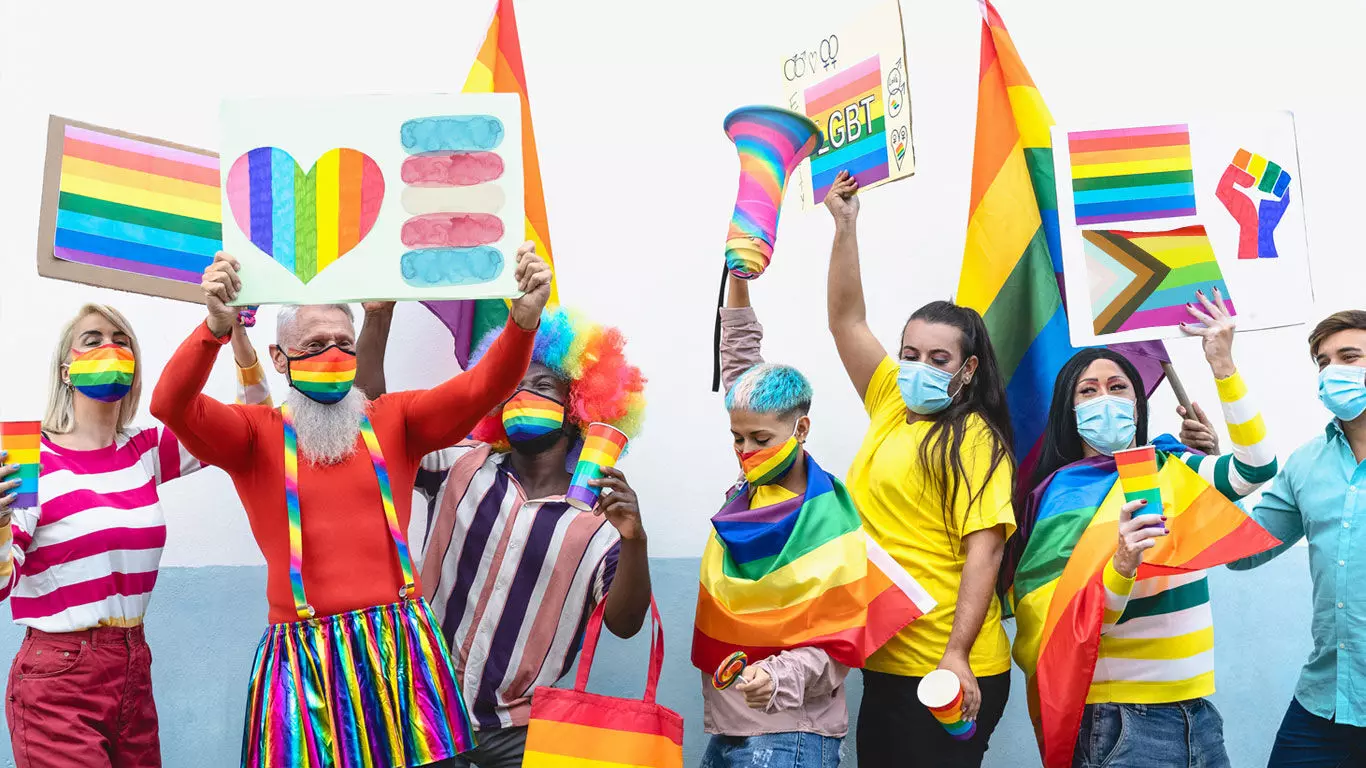Rainbow identities
Recognition of resilience, diversity, and contributions of the LGBTQIA+ community could ensure a beautiful and inclusive society

June is widely recognised as Pride Month, a time to celebrate the resilience, diversity, and contributions of LGBTQIA+ individuals. Historically, it commemorates the Stonewall riots that took place in June 1969, marking a pivotal moment in the fight for LGBTQIA+ rights. While we are inching towards a verdict on the status of ‘same-sex marriages’ in our country, many people remain confused with the terminologies surrounding the community. Here is a basic guide to understanding LGBTQIA communities better.
What is the full form of LGBTQIA+?
L= Lesbian: A female-identified person who is attracted to and may form sexual and romantic relationships with another female-identified person.
G = Gay: A male-identified person who is attracted to and may form sexual and romantic relationships with another male-identified person.
B= Bisexual: Someone who is attracted to and may form sexual and romantic relationships with someone regardless of that person’s gender identity.
T= Trans: A broad inclusion of people who identify or experience their sex or gender in ways that do not conform to their assigned sex at birth.
Q= Queer/ Questioning: ‘Questioning’ refers to those exploring and questioning their sexual orientation or gender identity, while ‘queer’ is an umbrella term used to describe diverse sexual orientations and gender identities beyond heterosexuality or cisgender identities. In the past, queer was used as a derogatory slur.
I= Intersex: It describes individuals born with physical or biological variations in sex characteristics that do not align with the typical male or female definition. This can be due to differences in chromosomes, hormones, internal reproductive organs, or external genitalia. Approximately 1 in 2,000 individuals are born with intersex traits.
A= Asexual: Asexual is a term used to describe individuals who do not experience sexual attraction or have a lack of sexual interest or desire.
What does ‘plus’ stand for?
The “+” symbol in LGBTQIA+ is an inclusive term to represent the existence of additional sexual orientations, gender identities, and diverse experiences beyond the specific letters in the initial acronym.
What does sexual orientation mean?
Sexual orientation refers to a person’s enduring pattern of emotional, romantic, and/or sexual attraction to individuals of the same or different genders. Sexual orientation is an inherent aspect of a person’s identity and is not something that can be chosen or changed.
What is homophobia?
Homophobia refers to a range of negative attitudes, beliefs, and behaviours directed towards individuals who are perceived or known to be lesbian, gay, or bisexual. It involves prejudice, discrimination, and hostility based on a person’s sexual orientation.
What do ‘closeted’ and ‘coming out’ mean?
Closeted is a term used to describe the concealment of sexual orientation or gender identity from people around you. ‘Coming out’ refers to the process by which someone discloses their sexual orientation or gender identity to others, typically family, friends, or peers. It is an act of self-disclosure where individuals openly share their true identity, often after a period of self-reflection, self-acceptance, and personal growth.
Is bisexuality just confusion or a denial for those who are homosexual?
Bisexuality is a valid sexual orientation and not a form of confusion or denial.
How can someone be asexual? Isn’t it a basic instinct to want and need sexual contact?
Asexuality is a valid sexual orientation where individuals do not experience sexual attraction or have a lack of sexual interest or desire. These individuals may still engage in romantic or emotional relationships and have diverse experiences of attraction that do not involve sexual desire. This is not a disorder.
What does ‘transition’ mean? What do the short forms FTM and MTF mean?
Transition is the process of changing a person’s bodily appearance either to be more congruent with their gender identity or to be in harmony with their preferred gender expression. This can include hormone therapy and/or various surgical procedures. One can transition from FTM (Female-to-Male) or MTF (Male-to-Female).
What does the Rainbow flag signify?
The rainbow flag was designed in 1978 for Gay Pride in San Francisco, and the rainbow colours symbolise the diversity within the LGBTIQA+ population.
How can I support my friends from the community and be an ally?
Educate yourself: Read books, articles, watch documentaries, and listen to podcasts that provide diverse perspectives to educate yourself.
Use inclusive language: Be mindful of the language you use, avoid making assumptions about someone’s gender or sexual orientation.
Listen and support: Create a safe, supportive environment for individuals. Respect confidentiality and never out someone without their consent.
Stand up against discrimination: Speak out against discrimination, prejudice, and homophobia/transphobia at work, in communities, and in your social circles by challenging harmful stereotypes and myths.
Amplify LGBTQIA voices: Use your platform and privilege to amplify the voices and experiences of LGBTQIA individuals.
Send your questions to [email protected]



